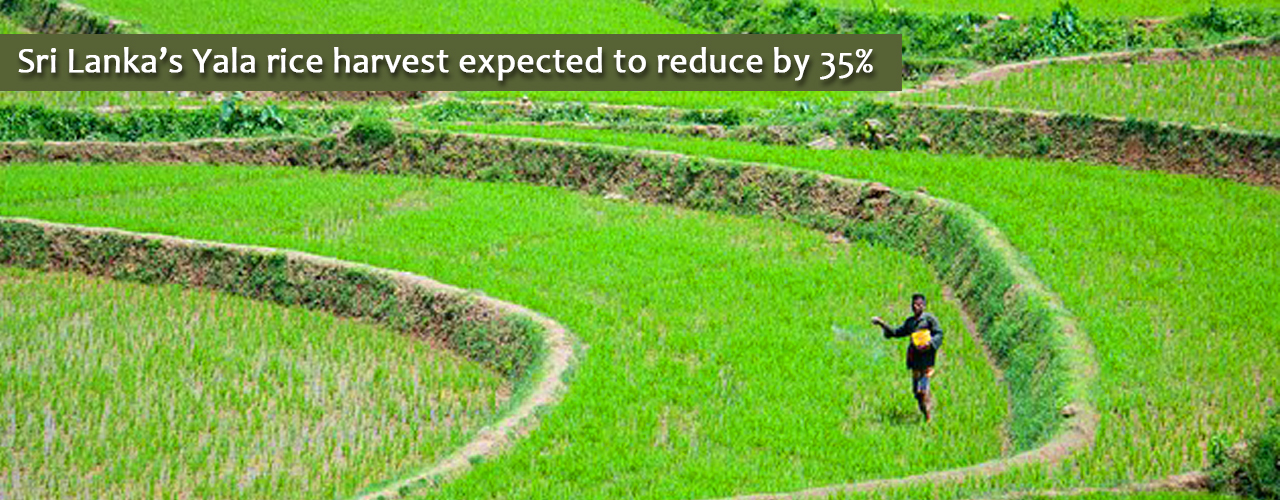Sri Lanka’s Yala rice harvest expected to reduce by 35%
State Agriculture Agency data reveals that during this year’s minor cultivation season, Yala, Sri Lanka is expected to harvest only 988,000 metric tonnes of paddy as a result of the ongoing drought. This is a 35% reduction from last year’s yield and is the lowest recorded in a decade.
However, forecast results have taken a slight optimistic turn as June data has increased the production forecast to 988,000 metric tonnes from 789,000 metric tonnes based on May data.
Despite heavy rains and floods in the country’s wet zone, the rest of the country is suffering from a drought condition with low water levels or completely dried out irrigation tanks until the North East monsoon in September.
Due to the ongoing drought that has been prevailing from last year, farmers have been advised to use water sparingly and plant less water intensive crops than rice.
According to the Irrigation Department only 254,967 hectares out of the targeted 400,020 hectares had been sownup to June, in comparison to 386,000 hectares sown during the drought year of 2016.
Also, 5,539 hectares of sown rice fields were either partially or fully damaged by both floods and the drought which will result in a 16,122 metric tonne crop loss, with only an estimated 988,329 metric tonnes being harvested.
The 2017 Yala season is expected to yield only 870,000 metric tonnes of paddy for milling after adjusting for wastage and seed paddy, resulting in 590,000 metric tonnes of milled rice.
After analysing the country’s usual consumption patterns, the calculated deficit for 2017 is an estimated 851,000 metric tonnes.
A portion of consumers are likely to seek substitute staples like wheat flour, pulses etc. resulting in a reduction in the total demand for rice with the price of rice having already increased.
OSL TAKE:
Rice prices may stabilise creating a stable demand for rice providing both exporters and importers a secure business environment with the government having reduced import taxes easing rice importation and also the expectation that price controls, that create market distortions will also cease.
The shift to substitutes also provides an avenue for new import channels that may result in the creation of another successful market.
| Article Code : | VBS/AT/25082017/Z_4 |

